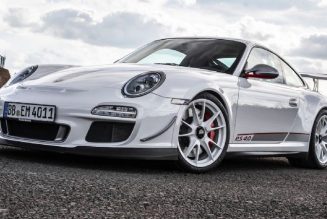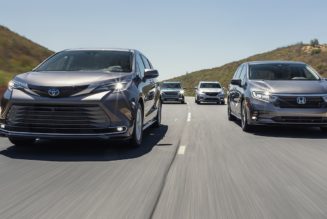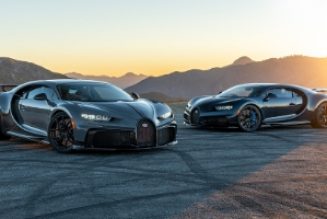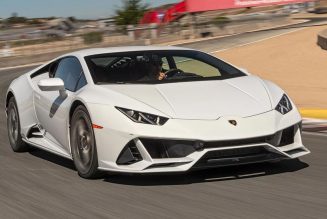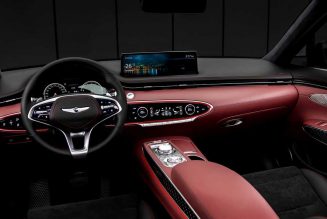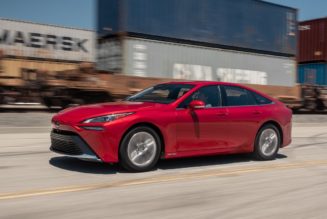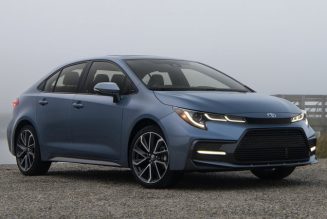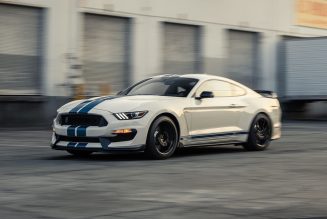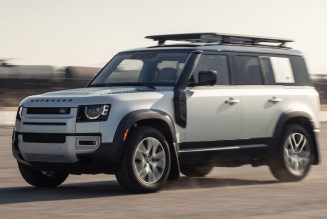We’ve examined how Ford’s truncated, tallened, and toughened-up Escape compares against Jeep’s Renegade, Compass, and Cherokee; now let’s size the 2021 Ford Bronco Sport up against the wider compact SUV competitive set. Bear in mind that the Escape is primarily tasked with broad-market appeal, so its offerings span a wider price, performance, and capability spectrum. The Bronco Sport is more focused on enabling adventure travel, but it’s not the only one on this list with such a focus. So how does it stack up?
2021 Ford Bronco Sport Inner People Space vs. the Competition
Tall buyers will delight in the class-leading front and rear headroom afforded by the all-new 2021 Ford Bronco Sport’s tall, safari-stepped boxy roofline. Front legroom is also among the class leaders, while rear legroom and front and rear hip and shoulder room are closer to average. But when the numbers get multiplied out, overall the Bronco Sport delivers 58.0 cubic feet of front passenger space, ranking second only to the Subaru Forester (60.1), and its rear space nails the class average at 49.5 cubes. That’s pretty impressive, given the Bronco Sport’s shortest in class overall length. (Tall people who parallel park a lot, take notice!)
| Base Model Interior Dimensions, Largest to Smallest | Front Head Room (in) | Front Leg Room (in) | Front Hip Room (in) | Front Sh’lder Room (in) | Rear head Room (in) | Rear Leg Room (in) | Rear Hip Room (in) | Rear Sh’lder Room (in) | Front Pass. Space (cu ft) | Rear Pass. Space (cu ft) | Total Pass. Space (cu ft) |
| Subaru Forester | 41.2 | 43.3 | 54.1 | 58.2 | 39.6 | 39.4 | 53.6 | 57.2 | 60.1 | 51.6 | 111.7 |
| Ford Escape | 40.0 | 42.4 | 55.2 | 57.6 | 39.3 | 40.7 | 53.3 | 56.0 | 56.5 | 51.8 | 108.4 |
| Ford Bronco Sport | 41.5 | 42.4 | 55.0* | 57.0 | 41.7 | 36.9 | 53.0* | 55.6 | 58.0 | 49.5 | 107.6 |
| Honda CR-V | 40.1 | 41.3 | 55.1 | 57.9 | 39.2 | 40.4 | 49.5 | 55.6 | 55.5 | 50.5 | 105.9 |
| Nissan Rogue | 41.1 | 54.1 | 41.5 | 57.1 | 39.2 | 53.4 | 38.5 | 55.9 | 56.4 | 48.8 | 105.2 |
| Chevrolet Equinox | 40.0 | 40.9 | 54.2 | 57.2 | 38.5 | 39.9 | 51.7 | 55.5 | 54.2 | 49.3 | 103.5 |
| Jeep Cherokee | 39.4 | 41.1 | 53.8 | 57.6 | 38.5 | 40.3 | 49.9 | 55.1 | 54.0 | 49.5 | 103.5 |
| Mazda CX-5 | 39.7 | 41.0 | 55.2 | 57.1 | 39.0 | 39.6 | 55.3 | 54.8 | 53.8 | 49.0 | 102.8 |
| Hyundai Tucson | 39.6 | 41.5 | 55.6 | 57.1 | 39.2 | 38.2 | 54.5 | 55.5 | 54.3 | 48.1 | 102.4 |
| Kia Sportage | 39.3 | 41.5 | 54.3 | 57.1 | 39.1 | 38.2 | 51.2 | 55.1 | 53.9 | 47.6 | 101.5 |
| Toyota RAV4 | 39.5 | 41.0 | 54.3 | 57.8 | 39.5 | 37.8 | 47.7 | 56.4 | 54.2 | 47.1 | 101.3 |
| *Estimated | |||||||||||
2021 Ford Bronco Sport Inner Cargo Space vs. the Competition
Much of what the Bronco Sport’s shorter rear overhang takes away, that safari-step roof gives back in terms of raw numbers. At 32.0 cubic feet with the seats up, 65.0 with them down, the Bronco Sport measures exactly 1.0 cubic foot below the class average for each measure. But cargo space is what cargo space does, and Ford has ensured that frequently hauled adventure gear fits easily. For example, with the rear seat folded down, two mountain bikes fit easily inside with the front wheels removed (the accessories team will even sell you a bar that mounts to the floor for securing the bikes’ forks).
| Cargo Capacity, Largest to Smallest |
Cargo, Seats Up (cu ft) | Cargo, Seats Down (cu ft) |
| Subaru Forester | 35.4 | 76.1 |
| Honda CR-V | 39.2 | 75.8 |
| Nissan Rogue | 36.5 | 74.1 |
| Toyota RAV4 | 37.6 | 69.8 |
| Ford Escape | 33.5 | 65.4 |
| Ford Bronco Sport | 32.0 | 65.0 |
| Chevrolet Equinox | 29.9 | 63.9 |
| Hyundai Tucson | 31.0 | 61.9 |
| Kia Sportage | 30.7 | 60.1 |
| Mazda CX-5 | 30.9 | 59.6 |
| Jeep Cherokee | 25.8 | 54.7 |
2021 Ford Bronco Sport Outer Space vs. the Competition
As we’ve already noted, the Bronco Sport is the runt of this litter in terms of length, stretching 7.1 inches shorter than the class average. But it is also the widest and tallest in the class, at 74.3 inches wide and 67.9-69.1 inches tall, depending on the trim variant. Those extremes land the Bronco Sport smack in the middle of the class in terms of overall space efficiency (interior people and cargo space divided by the volume of the exterior box).
| Exterior Size, Sorted by Space Efficiency | Wheel-base (in) | Length (in) | Width (in) | Height (in) | Efficiency* | ||||||
| Subaru Forester | 105.1 | 182.1 | 71.5 | 67.5 | 29.1% | ||||||
| Honda CR-V | 104.7 | 182.1 | 73.0 | 66.1 | 28.5% | ||||||
| Nissan Rogue | 106.4 | 182.8 | 72.4 | 65.9 | 28.3% | ||||||
| Hyundai Tucson | 105.1 | 176.2 | 72.8 | 65.0 | 28.0% | ||||||
| Ford Escape | 106.7 | 180.5 | 74.1 | 66.1 | 27.9% | ||||||
| Ford Bronco Sport | 105.1 | 172.7 | 74.3 | 67.9-69.1 | 27.7% | ||||||
| Kia Sportage | 105.1 | 176.4 | 73.0 | 64.8 | 27.5% | ||||||
| Mazda CX-5 | 106.2 | 179.1 | 72.5 | 66.2 | 27.4% | ||||||
| Toyota RAV4 | 105.9 | 180.9 | 73.0 | 67.0 | 27.1% | ||||||
| Chevrolet Equinox | 107.3 | 183.1 | 72.6 | 65.4 | 26.6% | ||||||
| Jeep Cherokee | 106.4 | 182.0 | 73.2 | 65.7 | 25.5% | ||||||
| *Total passenger vol + Seats-Up cargo vol divided by L x W x H exterior vol | |||||||||||
2021 Ford Bronco Sport Power and Weight vs. the Competition
Although it borrows the Escape’s drivetrains, routing the exhaust to stay out of harm’s way when off-road and tuning the engine power and torque slightly to suit the Bronco Sport’s different mission alter the Escape’s engine specs. That, plus the added gear to keep it moving safely through the rough stuff means the Bronco Sport ranks a bit lower on the weight-to-power list than the Escape. But in its 2.0-liter turbo guise, it ranks fifth in class behind the Cherokee 2.0T in terms of weight to power (though weight-to-torque reverses that order, putting Bronco Sport fourth). At the other end of the spectrum, the wee little 1.5-liter three-banger EcoBoost engine ranks fourth from the bottom of both lists, so don’t go racing for pinks in the base Bronco Sport.
| Power and Weight, Best to Worst | Engine | Size (L) | HP (SAE net) | Torque (lb-ft) | Curb Wt. (lbs)* | Wt./Pwr (lb/hp) |
| Chevrolet Equinox | I-4 turbo | 2.0 | 252 | 260 | 3,450 | 13.7 |
| Jeep Cherokee | V-6 | 3.2 | 271 | 239 | 3,750 | 13.8 |
| Ford Escape | I-4 turbo | 2.0 | 250 | 275 | 3,550 | 14.2 |
| Jeep Cherokee | I-4 turbo | 2.0 | 270 | 295 | 4,000 | 14.8 |
| Ford Bronco Sport | I-4 turbo | 2.0 | 245 | 275 | 3,650 | 14.9 |
| Mazda CX-5 | I-4 turbo | 2.5 | 250 | 320 | 3,850 | 15.4 |
| Kia Sportage | I-4 turbo | 2.0 | 240 | 260 | 3,700 | 15.4 |
| Toyota RAV4 | I-4 | 2.5 | 203 | 184 | 3,400 | 16.7 |
| Honda CR-V | I-4 turbo | 1.5 | 190 | 179 | 3,350 | 17.6 |
| Kia Sportage | I-4 | 2.4 | 181 | 175 | 3,300 | 18.2 |
| Ford Escape | I-3 turbo | 1.5 | 180 | 177 | 3,300 | 18.3 |
| Nissan Rogue | I-4 | 2.5 | 181 | 181 | 3,350 | 18.5 |
| Subaru Forester | flat-4 | 2.5 | 182 | 176 | 3,450 | 19.0 |
| Mazda CX-5 | I-4 | 2.5 | 187 | 186 | 3,550 | 19.0 |
| Ford Bronco Sport | I-3 turbo | 1.5 | 181 | 190 | 3,500 | 19.3 |
| Hyundai Tucson | I-4 | 2.4 | 181 | 175 | 3,500 | 19.3 |
| Chevrolet Equinox | I-4 turbo | 1.5 | 170 | 203 | 3,300 | 19.4 |
| Hyundai Tucson | I-4 | 2.0 | 164 | 151 | 3,300 | 20.1 |
| Jeep Cherokee | I-4 | 2.4 | 180 | 171 | 3,650 | 20.3 |
| *Lightest available combination | ||||||
2021 Ford Bronco Sport Towing Capacity vs. the Competition
Many adventurous pursuits require toys that need to ride along behind your adventuremobile, and the Bronco Sport is aimed at adventurers. And while the 1.5-liter Bronco Sport can tug just as much trailer as its sibling Escape, the 2.0-liter is restricted to 2,200 pounds—1,300 fewer than the Escape can manage. Perhaps it’s the twin-clutch rear axle or the shorter final-drive gearing, but you’ll need to go a bit smaller on the travel-trailer or boat (maybe 16 feet tops for either).. Both numbers are still class-competitive and will allow you to tow a small pop-up camper, a pair of jet-skis or snowmobiles, a quad-runner, or another like-sized object.
| Towing Capacities (non-hybrid models) | Powertrain | Maximum Towing Capacity (lbs) |
| Chevrolet Equinox | 2.0L 4-cyl. Turbo 9-speed Automatic | 3,500 |
| Ford Escape | 2.0L 4-cyl. Turbo 8-speed Automatic | 3,500 |
| Toyota RAV4 | 2.5L 4-cyl. 8-speed Automatic | 3,500 |
| Ford Bronco Sport | 2.0L 4-cyl. Turbo 8-speed Automatic | 2,200 |
| Ford Bronco Sport | 1.5L 3-cyl. Turbo 8-speed Automatic | 2,000 |
| Ford Escape | 1.5L 3-cyl. Turbo 8-speed Automatic | 2,000 |
| Hyundai Tucson | 2.4L 4-cyl. 6-speed Automatic | 2,000 |
| Jeep Cherokee | 2.4L 4-cyl. 9-speed Automatic | 2,000 |
| Kia Sportage | 2.4L 4-cyl. 6-speed Automatic | 2,000 |
| Kia Sportage | 2.0L 4-cyl. Turbo 6-speed Automatic | 2,000 |
| Mazda CX-5 | 2.5L 4-cyl. Turbo 6-speed Automatic | 2,000 |
| Chevrolet Equinox | 1.5L 4-cyl. Turbo 6-speed Automatic | 1,500 |
| Honda CR-V | 1.5L 4-cyl. Turbo CVT Automatic | 1,500 |
| Hyundai Tucson | 2.0L 4-cyl. 6-speed Automatic | 1,500 |
| Subaru Forester | 2.5L 4-cyl. CVT Automatic | 1,500 |
| Toyota RAV4 | 2.5L 4-cyl. 8-speed Automatic | 1,500 |
| Nissan Rogue | 2.5L 4-cyl. CVT Automatic | 1,350 |
2021 Ford Bronco Sport Fuel Economy vs. the Competition
Here’s another area where Ford has yet to complete testing and announce results, but our guestimate place-holders assume the Bronco Sport lands in similar weight classes to the all-wheel-drive Escape models, but with less aerodynamic bodywork (potentially higher drag coefficient and frontal area) and with the 2.0-liter variant getting a shorter axle ratio than in the Escape. We’re guessing that will cost the baby Bronco 1 highway mpg relative to the Escape with both engines. We then assume the Badlands model’s water-cooled fancier all-wheel-drive system and shorter axle ratio (3.81:1 versus 3.47:1) may cost a further 1 mpg of highway and 2 mpg of city economy. Call it an estimated 26/30/28 mpg city/highway/combined for the 1.5-liter; 21/29/24 for the 2.0-liter. This places the base 1.5-liter Bronco Sport in the top half of the class, with the 2.0-liter ranking below average.
| Fuel Economy | Powertrain | EPA city | EPA hwy | EPA comb |
| Honda CR-V | 1.5L 4-cyl. Turbo CVT Automatic | 28 | 34 | 30 |
| Toyota RAV4 | 2.5L 4-cyl. 8-speed Automatic | 26-28 | 34-35 | 30 |
| Ford Escape | 1.5L 3-cyl. Turbo 8-speed Automatic | 27 | 33 | 30 |
| Nissan Rogue | 2.5L 4-cyl. CVT Automatic | 26-27 | 34-35 | 29-30 |
| Honda CR-V | 1.5L 4-cyl. Turbo CVT Automatic, AWD | 27 | 32 | 29 |
| Subaru Forester | 2.5L 4-cyl. CVT Automatic | 26 | 33 | 29 |
| Nissan Rogue | 2.5L 4-cyl. CVT Automatic, AWD | 25-26 | 32-33 | 28-29 |
| Chevrolet Equinox | 1.5L 4-cyl. Turbo 6-speed Automatic | 26 | 31 | 28 |
| Ford Escape | 1.5L 3-cyl. Turbo 8-speed Automatic, AWD | 26 | 31 | 28 |
| Ford Bronco Sport | 1.5L 3-cyl. Turbo 8-speed Automatic, AWD | 26* | 30* | 28* |
| Mazda CX-5 | 2.5L 4-cyl. 6-speed Automatic | 25 | 31 | 28 |
| Toyota RAV4 | 2.5L 4-cyl. 8-speed Automatic, AWD | 25-27 | 32-33 | 27-29 |
| Chevrolet Equinox | 1.5L 4-cyl. Turbo 6-speed Automatic, AWD | 25 | 30 | 27 |
| Mazda CX-5 | 2.5L 4-cyl. 6-speed Automatic, AWD | 24 | 30 | 26 |
| Ford Escape | 2.0L 4-cyl. Turbo 8-speed Automatic, AWD | 23 | 31 | 26 |
| Jeep Cherokee | 2.0L 4-cyl. Turbo 9-speed Automatic | 23 | 31 | 26 |
| Kia Sportage | 2.4L 4-cyl. 6-speed Automatic | 23 | 30 | 26 |
| Hyundai Tucson | 2.0L 4-cyl. 6-speed Automatic | 23 | 28 | 25 |
| Chevrolet Equinox | 2.0L 4-cyl. Turbo 9-speed Automatic | 22 | 29 | 25 |
| Hyundai Tucson | 2.4L 4-cyl. 6-speed Automatic | 22 | 28 | 25 |
| Jeep Cherokee | 2.4L 4-cyl. 9-speed Automatic | 22 | 31 | 25 |
| Ford Bronco Sport | 2.0L 4-cyl. Turbo 8-speed Automatic, AWD | 21* | 29* | 24* |
| Chevrolet Equinox | 2.0L 4-cyl. Turbo 9-speed Automatic, AWD | 22 | 28 | 24 |
| Mazda CX-5 | 2.5L 4-cyl. Turbo 6-speed Automatic, AWD | 22 | 27 | 24 |
| Jeep Cherokee | 2.4L 4-cyl. 9-speed Automatic, AWD | 21 | 29 | 24 |
| Hyundai Tucson | 2.0L 4-cyl. 6-speed Automatic, AWD | 22 | 25 | 23 |
| Kia Sportage | 2.4L 4-cyl. 6-speed Automatic, AWD | 22 | 26 | 23 |
| Hyundai Tucson | 2.4L 4-cyl. 6-speed Automatic, AWD | 21 | 26 | 23 |
| Jeep Cherokee | 3.2L V-6, 9-speed Automatic | 20 | 29 | 23 |
| Kia Sportage | 2.0L 4-cyl. Turbo 6-speed Automatic | 20 | 28 | 23 |
| Jeep Cherokee | 2.0L 4-cyl. Turbo 9-speed Automatic, AWD | 20-21 | 26-29 | 22-24 |
| Jeep Cherokee | 3.2L V-6, 9-speed Automatic, 4WD | 18-19 | 24-27 | 21 |
| Kia Sportage | 2.0L 4-cyl. Turbo 6-speed Automatic, AWD | 19 | 24 | 21 |
| *Estimates based on Escape weight class with slightly worse aerodynamics and shorter axle gearing (2.0L). | ||||
We’re as eager as you are to get all the final numbers and round up these vehicles—and the anticipated newcomers in the class—as soon as possible. Keep it right here!


